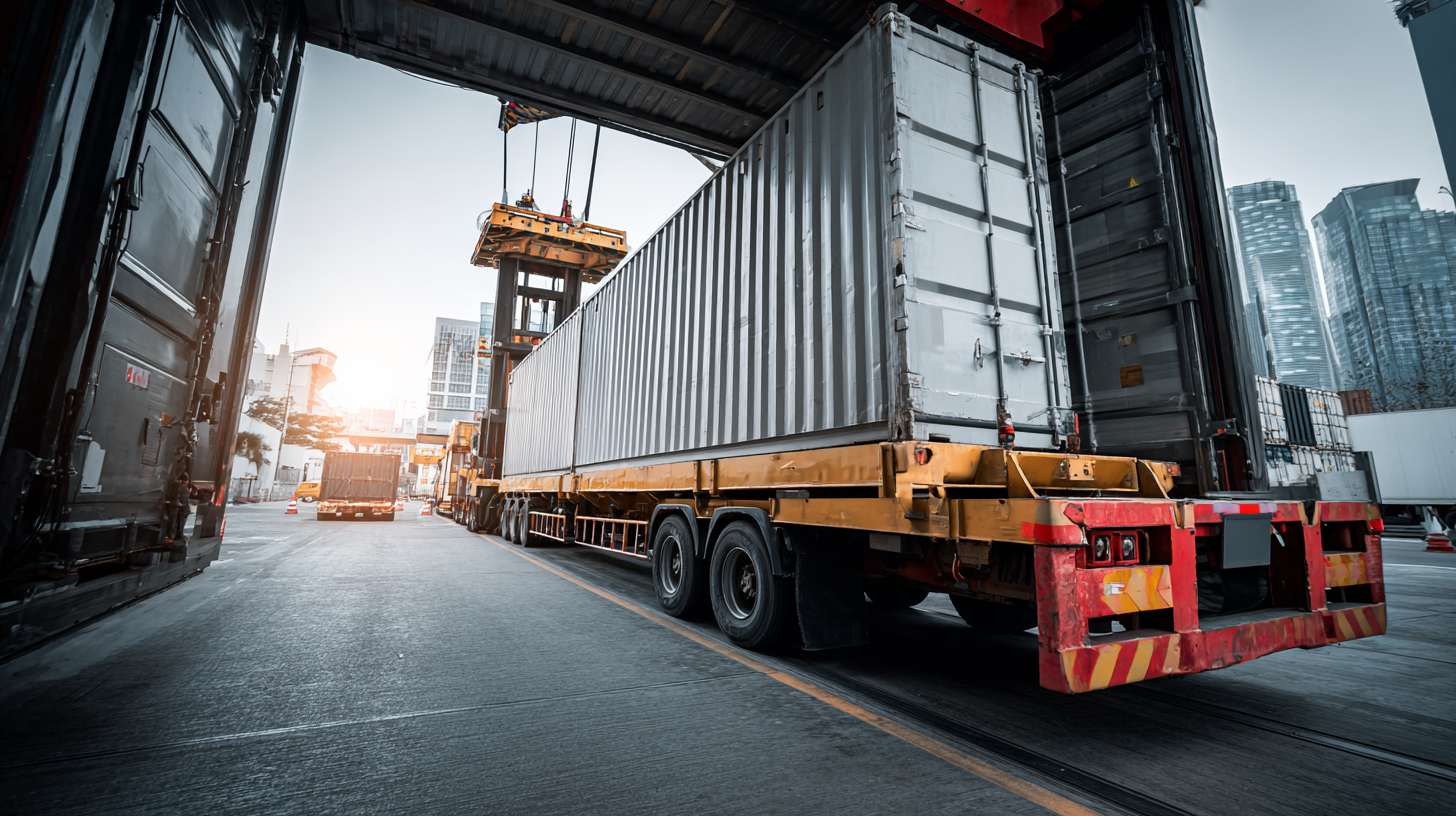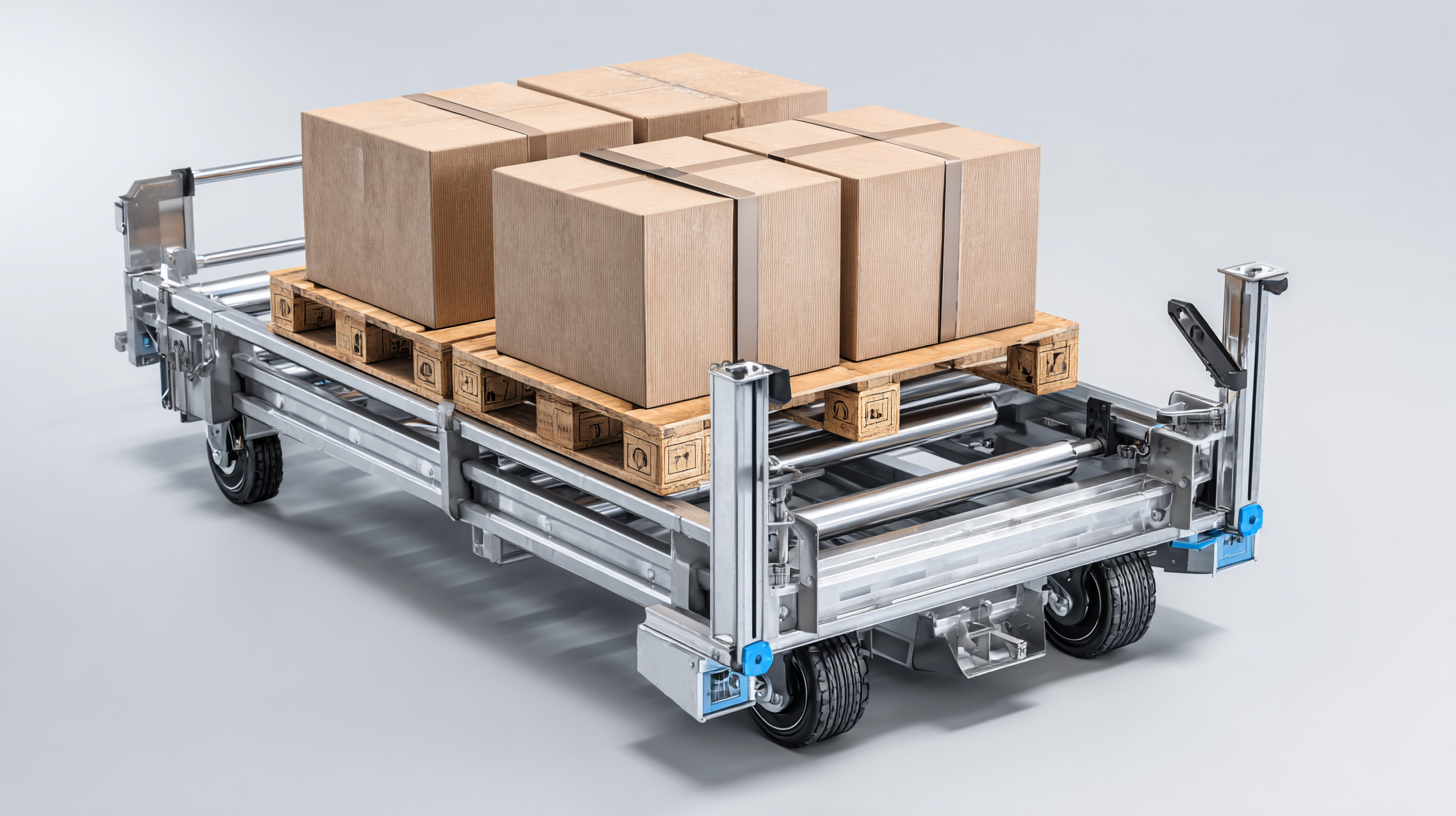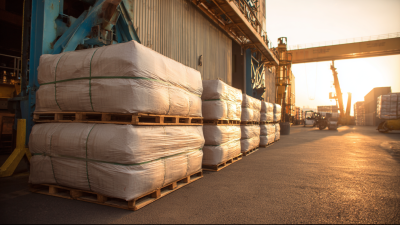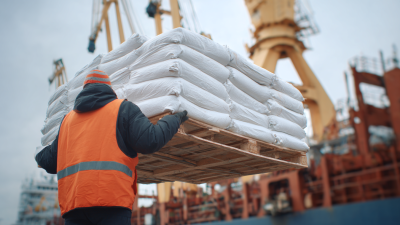
The transportation and distribution industry faces ongoing challenges related to cargo security and efficiency, with recent reports indicating that over 60% of freight damage is caused by insufficient load restraint (Freight Transportation Research Institute, 2022). In response to these challenges, innovative solutions such as Cargo Load Bars have emerged as critical tools for enhancing safety and minimizing cargo shifting during transport. These load bars not only provide effective bracing within trailers and containers but also contribute to optimal space utilization, reducing the risk of damage and loss. According to a study by Logistics Management Group (2023), implementing Cargo Load Bars can decrease cargo-related incidents by up to 30%, making them a favorable choice for companies striving for operational excellence. As the logistics sector evolves, understanding and utilizing Cargo Load Bars will be essential for businesses aiming to improve both safety and efficiency in the transport of goods.

Cargo load bars have emerged as a crucial tool in enhancing load stability during transport, leading to a significant reduction in freight damage and accidents. According to a study by the American Trucking Associations, nearly 40% of cargo loss is attributed to poor load securing techniques. By utilizing cargo load bars, which provide additional support to prevent shifting and tipping, businesses can mitigate these risks effectively. This innovation not only ensures the integrity of the cargo but also promotes safety for drivers and other road users.
Furthermore, the use of cargo load bars can enhance operational efficiency. The National Association of Freight Logistics reports that properly secured loads can improve transport efficiency by up to 20%, reducing the need for frequent stops and ensuring timely deliveries. As businesses face increasing pressure to optimize logistics and minimize costs, integrating cargo load bars into their transport operations becomes essential. With the right solutions in place, companies can achieve better load stability, thus paving the way for a safer and more reliable supply chain.

When it comes to shipping and transporting goods, selecting the right cargo load bars is crucial for ensuring safety and efficiency. Cargo load bars are designed to stabilize and secure cargo within trailers, preventing shifting during transit. When choosing load bars, it's essential to consider the size and weight of your shipments, as different bars are built to support varying capacities. Additionally, materials such as aluminum or steel can impact durability and weight, with aluminum being lighter and more portable, while steel offers increased strength for heavier loads.

Another important factor is the adjustability and installation mechanism of the load bars. Some systems feature quick-release mechanisms for easy setup, while others may require more time to install. It’s also beneficial to evaluate the design of the load bars; options with non-slip surfaces or rubberized ends can enhance grip and minimize potential damage to the cargo or trailer. By carefully considering these elements, businesses can select cargo load bars that not only meet their shipping demands but also contribute to safer transport practices.
Installing cargo load bars correctly is essential for ensuring the safe transport and distribution of goods. To start, begin by measuring the interior width of your vehicle or cargo space to determine the appropriate length for your load bars. This ensures a snug fit, preventing any movement during transit. Once you have your load bars, position them horizontally across the cargo area and adjust them to the desired height, ensuring that they fit securely against the walls of the cargo space.
Tips for effective installation include ensuring that your load bars are evenly spaced and parallel to each other. This will provide balanced support for your cargo. Additionally, consider using rubberized grips or padding on the bars to prevent slippage and protect your vehicle's interior from scratches. Finally, always double-check the tension and security of the load bars after installation to confirm that they can withstand shifting loads during transport. By following these steps, you can enhance safety and efficiency during the distribution process.
Maintaining cargo load bars is essential for ensuring their longevity and effectiveness in securing loads during transport. Regular inspections are vital. Check for any signs of wear, including rust or deformation, which can compromise their integrity. It's important to clean the bars after each use to remove dirt and debris that may cause corrosion over time. Using a soft cloth and mild detergent can effectively restore their surface and prevent deterioration.
Proper storage also plays a critical role in extending the life of your cargo load bars. Always store them in a dry environment, ideally in a vertical position to avoid bending. If the load bars are not in use for an extended period, consider applying a protective oil or lubricant to prevent rust formation. Additionally, when using load bars, make sure to adhere to the manufacturer’s weight limits to reduce stress and potential damage. By following these maintenance tips, you can significantly prolong the lifespan of your cargo load bars and ensure safer transport and distribution.
| Aspect | Details |
|---|---|
| Material Type | Aluminum, Steel |
| Load Capacity | Up to 2,500 lbs |
| Adjustable Length | Extendable from 96" to 140" |
| Safety Features | Non-slip grips, secure locking mechanism |
| Maintenance Tips | Regular cleaning, lubrication of moving parts, inspect for wear |
| Expected Lifespan | 5-10 years with proper maintenance |
When utilizing cargo load bars in distribution, safety should always be the foremost priority. Proper installation is crucial; ensuring that load bars are securely fitted can prevent shifting and potential damage during transport. Regular inspections are essential, checking for signs of wear or damage that could compromise their effectiveness. Training staff on the correct usage of load bars not only enhances safety but also promotes efficiency in securing loads.
Another best practice involves understanding weight distribution and load limits. Distributing weight evenly across the cargo area helps in optimizing stability and reduces the risk of overloading any single bar. It’s important to follow manufacturer guidelines regarding the maximum load capacity of each bar. Additionally, integrating safety devices, such as tie-down straps alongside load bars, can provide an extra layer of security, ensuring that cargo remains in place throughout transit. Following these safety practices not only safeguards the cargo but also protects drivers and other road users, contributing to a safer distribution process overall.
This chart illustrates the effectiveness of cargo load bars in preventing load shift during transport. The data represents the percentage of incidents resulting from improper load securing methods over a year in various transportation environments.












